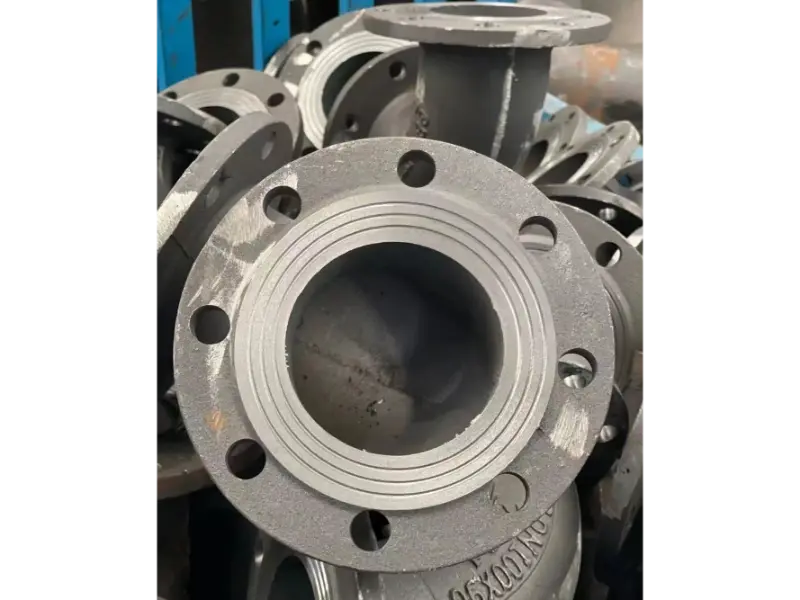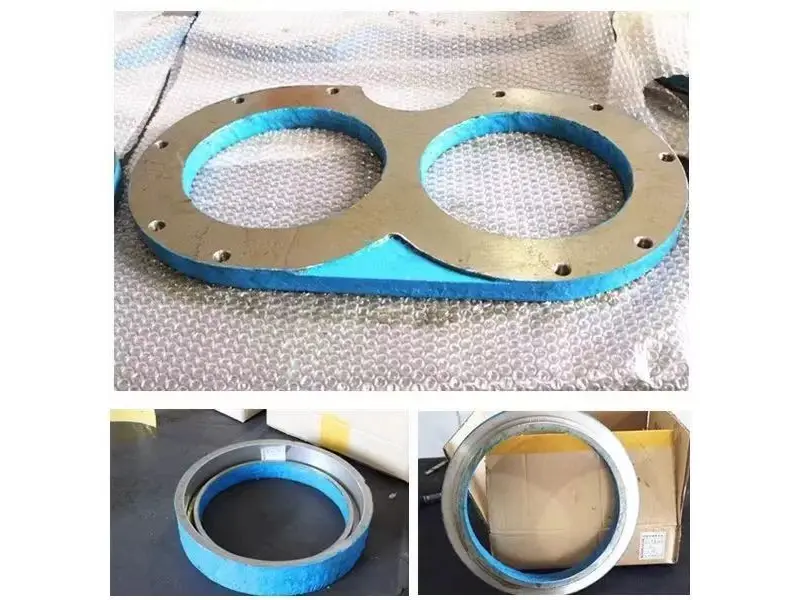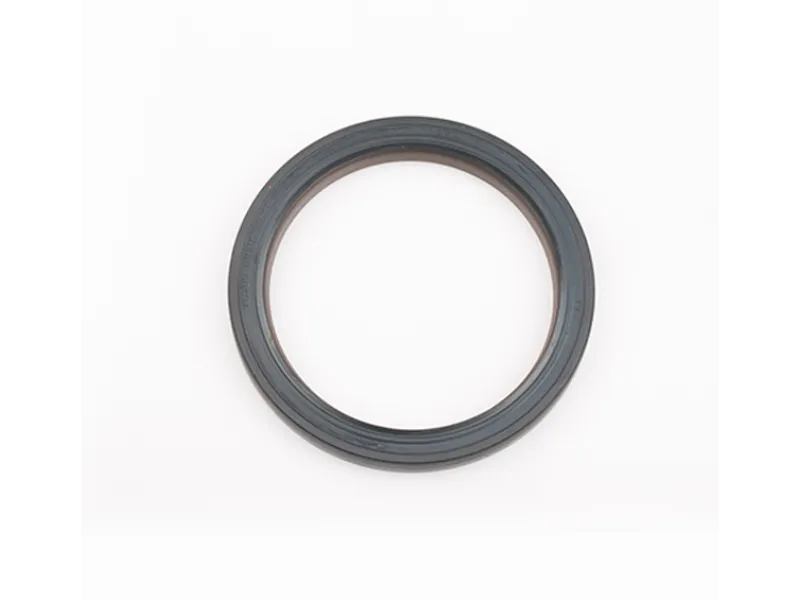Premium Pump Wear Rings for Enhanced Performance & Durability
Pump wear rings are essential components in ensuring the optimal performance and longevity of various pumping systems. These rings play a critical role in reducing friction, preventing wear, and maintaining the efficiency of pumps. In this article, we will explore the significance of premium pump wear rings, their types, materials, and how they contribute to enhanced performance and durability. We will also highlight why Welleshaft is the trusted global supplier and contract manufacturer for top-quality pump wear rings.
What Are Pump Wear Rings?
Pump wear rings are critical components used in centrifugal pumps and other pumping systems. They are designed to reduce friction between the rotating and stationary parts of the pump, minimize wear, and ensure smooth operation. Wear rings help maintain the efficiency of the pump by preventing metal-to-metal contact and protecting against abrasive particles in the fluid.
Purpose of Wear Rings in Pumps
The primary purposes of wear rings in pumps include:
Reducing Friction: Wear rings provide a low-friction surface that minimizes resistance between moving parts, improving pump efficiency.
Preventing Wear: They act as a protective barrier, preventing direct metal contact between the pump components and reducing wear on the pump housing and impeller.
Maintaining Efficiency: By reducing wear and friction, wear rings help maintain the pump’s performance over time, leading to longer operational life and fewer maintenance requirements.
For more information on high-quality pump wear rings and to find the perfect solution for your application, please contact us.
Jinan Welle Metal Products Co., Ltd (Welleshaft)
Website: www.welleshaft.com
Email: [email protected]
Phone: +86-156-5017-9596
Explore our range of durable and reliable pump wear rings today!

Types of Pump Wear Rings
Pump wear rings come in various types, each designed to meet specific performance requirements and applications. Here are some common types:
1. Hydraulic Piston Wear Rings
Description:
Hydraulic piston wear rings are used in hydraulic cylinders to support and guide the piston while minimizing friction and wear.
Materials:
Nylon: Offers good wear resistance and is suitable for moderate pressures.
PTFE (Polytetrafluoroethylene): Known for its low friction and high chemical resistance.
Applications:
Hydraulic cylinders
Heavy-duty machinery
2. Hallite Wear Rings
Description:
Hallite wear rings are high-quality components known for their durability and performance. They are designed to meet rigorous standards and provide reliable sealing solutions.
Materials:
Composite materials: Combining polymers and metals for enhanced performance.
Applications:
Hydraulic systems
Pneumatic actuators
3. Wear Rings in Centrifugal Pumps
Description:
Wear rings used in centrifugal pumps protect the pump casing and impeller from wear caused by abrasive particles in the fluid. They help maintain pump efficiency and reduce maintenance costs.
Materials:
Bronze: Known for its wear resistance and durability.
PTFE: Provides low friction and chemical resistance.
Applications:
Centrifugal pumps
Industrial pumping systems
4. Wear Ring Seals
Description:
Wear ring seals provide a sealing function in addition to wear resistance. They help prevent leakage and ensure the efficient operation of pumps and cylinders.
Materials:
Nitrile Rubber (NBR): Offers good resistance to hydraulic fluids.
Viton (Fluorocarbon): Provides excellent chemical resistance.
Applications:
Hydraulic cylinders
Pumps with high-pressure applications
Hydraulic Cylinder Wear Ring Materials
The choice of material for hydraulic cylinder wear rings affects their performance and durability. Common materials include:
Nylon: Provides good wear resistance and low friction.
PTFE: Known for its excellent low-friction properties and chemical resistance.
UHMWPE (Ultra-High Molecular Weight Polyethylene): Offers high impact strength and wear resistance.
For more information on high-quality pump wear rings and to find the perfect solution for your application, please contact us.
Jinan Welle Metal Products Co., Ltd (Welleshaft)
Website: www.welleshaft.com
Email: [email protected]
Phone: +86-156-5017-9596
Explore our range of durable and reliable pump wear rings today!
Piston Wear Ring Types and Sizes
Piston wear rings come in various types and sizes, designed to meet the specific needs of different applications. Some common types include:
Types of Piston Wear Rings
Solid Piston Wear Rings: Made from a single piece of material, providing durability and simplicity.
Segmented Piston Wear Rings: Composed of multiple segments that can be replaced individually.
Piston Wear Ring Sizes
Piston wear rings come in various sizes to accommodate different hydraulic and pneumatic systems. The size of a piston wear ring is determined by several factors:
Cylinder Bore Diameter: The diameter of the cylinder bore where the piston operates.
Piston Rod Diameter: The diameter of the piston rod that the wear ring guides.
Wear Ring Width: The width of the wear ring, which affects its contact area and performance.
Thickness: The thickness of the wear ring can influence its durability and ability to handle pressure.
Standard Sizes:
Small Diameter Rings: Typically used in smaller hydraulic cylinders and pneumatic actuators.
Medium Diameter Rings: Commonly used in medium-sized machinery and equipment.
Large Diameter Rings: Designed for heavy-duty applications and large hydraulic cylinders.
Custom Sizes:
Tailored Solutions: Wear rings can be manufactured to custom sizes to fit specific requirements and applications. Custom sizes ensure a precise fit and optimal performance.
Piston Wear Ring Replacement
Replacing worn piston wear rings is essential for maintaining the efficiency and longevity of hydraulic systems. Here’s how you can determine if replacement is necessary:
Signs of Worn Piston Rings
- Increased Friction:If you notice increased friction or resistance in the hydraulic cylinder, it may be a sign that the piston rings are worn.
- Leaking:Worn piston rings can lead to fluid leakage, affecting the performance of the hydraulic system.
- Reduced Performance:Decreased efficiency or performance in the hydraulic system can indicate that the wear rings need replacement.
Causes of Piston Ring Wear
- High Pressure: Excessive pressure can lead to accelerated wear of piston rings.
- Contaminants: Abrasive particles in the fluid can cause wear and damage to the rings.
- Improper Lubrication:Insufficient lubrication can increase friction and wear.
Why Choose Welleshaft for Pump Wear Rings?
Welleshaft is a leading global supplier and contract manufacturer of premium pump wear rings. Here’s why Welleshaft is your trusted partner for high-quality wear rings:
Expertise and Precision: With extensive experience in manufacturing pump wear rings, Welleshaft provides precision-engineered components that meet the highest standards.
Quality Materials: Welleshaft uses only the best materials to ensure durability and performance in every wear ring produced.
Custom Solutions: Welleshaft offers custom manufacturing services to meet specific requirements and applications, providing tailored solutions for your needs.
Global Reach: As a trusted global supplier, Welleshaft delivers high-quality wear rings to customers worldwide, ensuring reliable and timely service.
Conclusion
Premium pump wear rings are essential for enhancing the performance and durability of your pumping systems. Understanding their types, materials, and applications helps in selecting the best wear rings for your needs. Welleshaft, with its expertise and high-quality products, is your trusted partner for reliable pump wear rings and sealing solutions. For top-quality pump wear rings and expert support, consider Welleshaft as your go-to global supplier and contract manufacturer.


